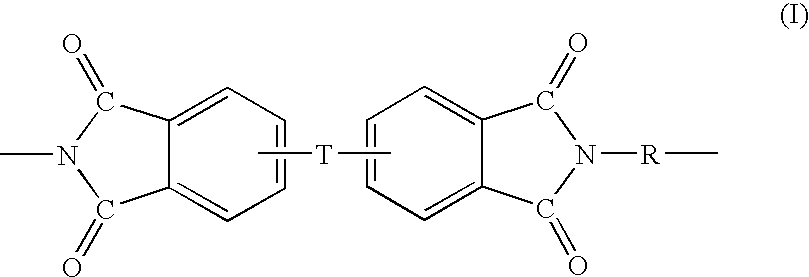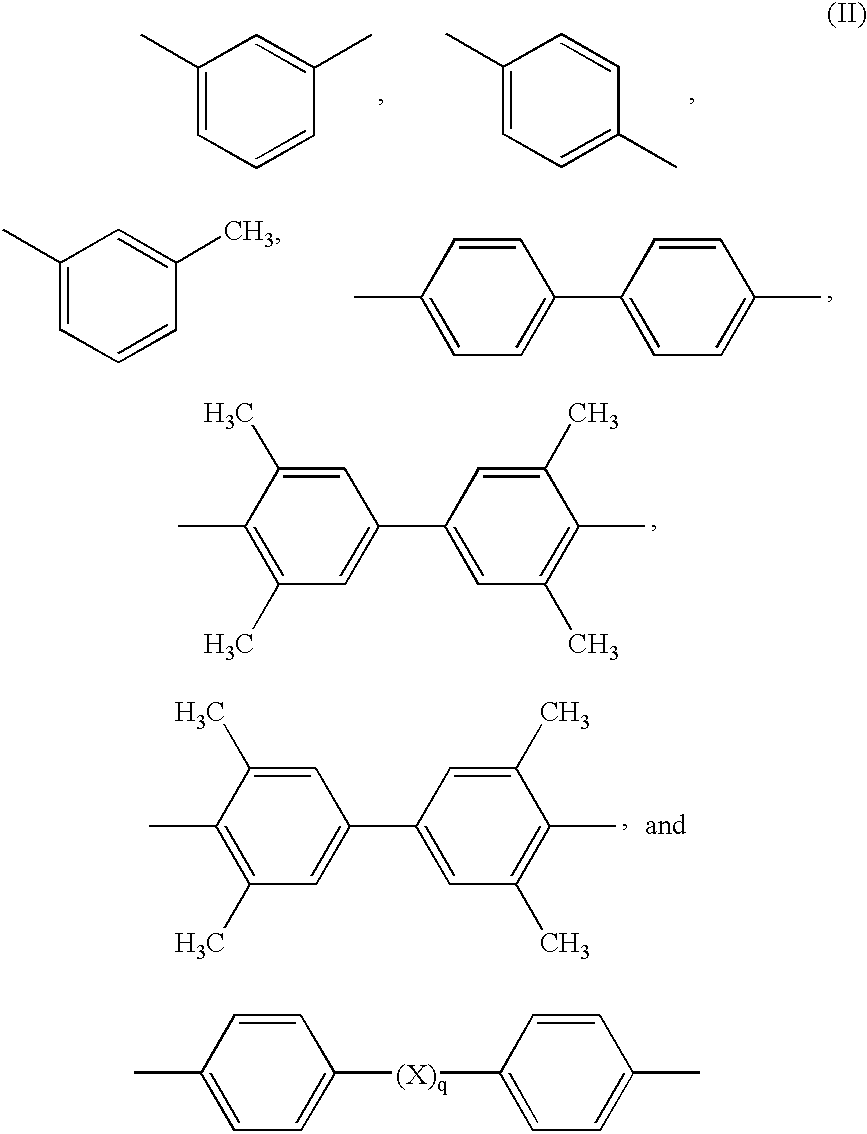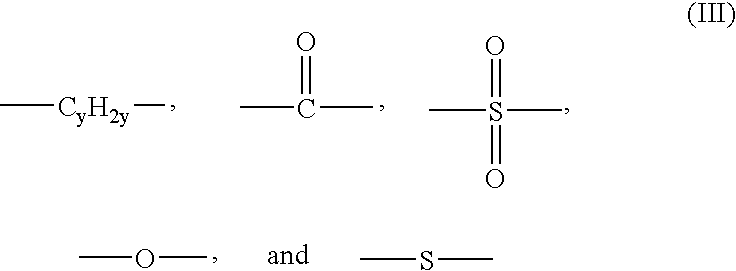Data storage medium and method for the preparation thereof
a data storage medium and data technology, applied in the field of data storage medium improvement, can solve the problems of impaired reflectivity of instruments, lighting and heating devices, photomechanical devices, etc., and achieve the effects of improving melt processing, molding or part stability, and reducing static charge build-up
- Summary
- Abstract
- Description
- Claims
- Application Information
AI Technical Summary
Benefits of technology
Problems solved by technology
Method used
Image
Examples
examples 1-3
, EXAMPLES 1-3
[0075] Injection molded 102 millimeter diameter.times.3.2 millimeter thick discs of polyetherimide (ULTEM 1010 from GE Plastics Co.) were coated using the following process: samples were pumped down in a vacuum chamber and glow cleaned at a power setting of 3.0 kW for 180 seconds at 0.023 torr. The parts were the pre-coated with a haze-reducing plasma-polymerized organosilicone coating made by introducing hexamethyldisiloxane (HMDSO) into the chamber and creating a plasma. The pressure was 0.027 to 0.036 torr, and the power was 3.2 kilowatts (kW). The plasma-polymerized organosilicone coating time was varied from 2 to 4 to 8 minutes to give a plasma-polymerized organosilicone coating thickness of about 40 to about 145 nm. The parts were then coated with about 100 nm of aluminum at 0.00005 torr. A post metallization protective top-coat was then applied at 0.027 torr, power 3.2 kW for 180 seconds. Coated samples were then subject to a post glow for 180 seconds at 3.2 kW ...
examples 12 and 13
[0082] The procedure of Comparative Examples J and K was followed, except that the polycarbonate plaques were pre-coated with an acrylic-modified colloidal silica composition before metalization. The acrylic-modified colloidal silica composition was obtained as an AS4000 suspension from GE Silicones and applied by flow coating and thermal curing to produce a cured haze reducing layer coating thickness of about 6-8 micrometers. After metallization with aluminum, samples showed no evidence of haze after up to 24 hours at temperatures as high as 145.degree. C. Although there was no hazing at 145.degree. C., samples warped and the acrylic-modified colloidal silica cracked at that temperature. This system, though successful at reducing haze, was not optimized for other performance features.
example 14
[0084] A 3.2 millimeter thick plaque of polyetherimide (ULTEM.RTM. 1000) was coated with a plasma-polymerized organosilicone layer to yield a coating thickness of about 2 micrometers. The plasma deposition was carried out using an expanding argon thermal plasma at 70 amps with 1.65 standard liters per minute (slpm) of argon. Deposition was carried out in two coating passes each about 1 micrometer thick. Oxygen and octamethylcyclotetrasiloxane (D4) were fed downstream of the expanding plasma through a ring injector. The feed rate of D4 was 0.19 slpm in both passes, and the feed rate of oxygen was 0.3 and 0.8 slpm in the first and second passes, respectively. The sample was then metallized by sputtering aluminum onto the plasma-polymerized organosilicone surface to yield a reflective layer thickness of about 200 nanometers. The sample was oven tested as described above. No hazing was observed at temperatures up to 220.degree. C.
PUM
| Property | Measurement | Unit |
|---|---|---|
| density | aaaaa | aaaaa |
| heat distortion temperature | aaaaa | aaaaa |
| thickness | aaaaa | aaaaa |
Abstract
Description
Claims
Application Information
 Login to View More
Login to View More - R&D
- Intellectual Property
- Life Sciences
- Materials
- Tech Scout
- Unparalleled Data Quality
- Higher Quality Content
- 60% Fewer Hallucinations
Browse by: Latest US Patents, China's latest patents, Technical Efficacy Thesaurus, Application Domain, Technology Topic, Popular Technical Reports.
© 2025 PatSnap. All rights reserved.Legal|Privacy policy|Modern Slavery Act Transparency Statement|Sitemap|About US| Contact US: help@patsnap.com



